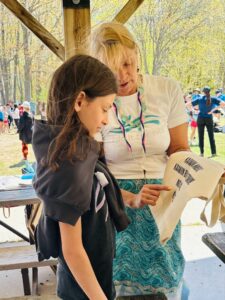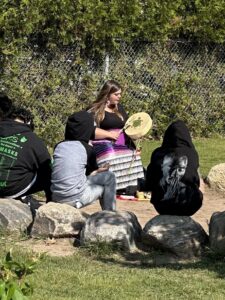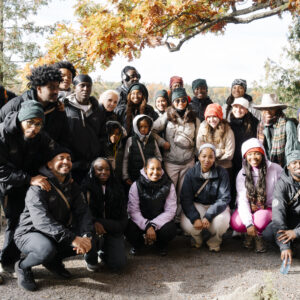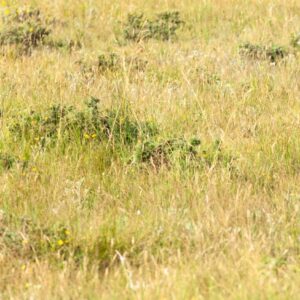Connecting Youth to Nature: NatureHood Supports Kids in the Biosphere

Teacher and Indigenous Knowledge Holder Ozawaa from Wasauksing First Nation
It’s no secret that there is a growing disconnect between youth and nature, and not just in urban areas where access to natural spaces and outdoor learning opportunities can be limited. Books, such as Richard Louv’s well-reputed Last Child in the Woods: Saving our Children from Nature-Deficit Disorder (2005) brought to the forefront the issue of how the disconnect with nature is impacting the health of children and society.
Dozens of other studies, such as those reviewed here by the Children and Nature Network, have shown that connection to nature is not only positive for the health of our children, but also potentially for planetary well-being as well. The education efforts undertaken by Georgian Bay Mnidoo Gamii Biosphere are motivated by these studies, since they show that time in nature during the transformative years before adulthood can play an important role in fostering life-long environmental stewards.
To help connect more youth in Georgian Bay Biosphere communities to Nature, we’ve partnered for the past few years with NatureHood, a program created by Nature Canada (supported by Environment and Climate Change Canada) that funds community events, programs, and resources aimed at reducing barriers to accessing nature. NatureHood is a national initiative that helps organizations like ours reduce obstacles such as transportation and financial constraints, as well as other barriers such as those experienced by marginalized populations.
With NatureHood’s support again this year, Georgian Bay Biosphere Mnidoo Gamii is thrilled to continue offering a range of opportunities for young people through our Kids in the Biosphere (KITB) program.
This includes the Georgian Bay Nibi Water Festival, which made an exciting return in 2025 after a six-year hiatus. Held at Killbear Provincial Park (Mukwa Nayoshing) during the mid-May burst of sunshine, the Festival welcomed close to 100 junior level elementary school students from three different school boards to learn about water conservation and deepen their relationship with Georgian Bay, Mnidoo Gamii. The day was filled with laughter, and learning on the shore of the Bay, thanks to all who collaborated, including Ozawaa, a local teacher and Knowledge Holder from Wasauksing First Nation who shared many teachings, including that of Grandmother Water Walker and the water protection movement she inspired.

Lisa Ross, local educator and Indigenous Knowledge Holder
Through a range of ten different hands-on activities facilitated by 40 Parry Sound High School volunteer students, kids explored topics like aquatic invasive species, macroinvertebrates as indicators of water quality, shorebird migration, the importance of clean water, Indigenous water stewardship teachings, and more. “My favourite part was being able to provide kids with an opportunity to engage and connect with the Bay.”, shared a Grade 10 student volunteer. According to Ms. Lair, a local Parry Sound teacher whose junior class participated, “The high schoolers did an amazing job leading their groups and engaging the students at the Water Festival. And since then, back at school, we’ve incorporated a bunch of water festival activity connections into the classroom through our social science, Indigenous language, and science curriculum.”
The Nibi Water Festival is just one part of broader efforts of Georgian Bay Mnidoo Gamii Biosphere (GBB) to foster youth environmental stewardship and non-colonial ways of relating to lakes and rivers and the species that rely on this land and water for life. Lisa Ross, a local Indigenous Knowledge Holder who recently supported another youth leadership day run together by Georgian Bay Youth Climate Collective and GBB, shared teachings about the Robinson Huron Treaty and the original people of this territory who’ve always cared for this land and continue to do so today. Lisa taught about the importance of water protection and how we’re all connected to the water, reminding the youth that, “Seven generations ago, our ancestors prayed, sang, and gave thanks for the water — not just for themselves, but for us. And now it’s our responsibility as people of Turtle Island to carry that work forward, to protect the spirit of the water for those yet to come, seven generations ahead.”
Lisa offered GBB a valuable reflection about this important work connecting youth to the lands and waters, “I know not everyone will remember every (song or) word I spoke, but if even one of those songs finds a place in their bundle, then I’ve done what I came there to do.”
Chi-miigwech to all those working to inspire the next generation of environmental stewards!
Learn more about Naturehood and sign up for updates.



